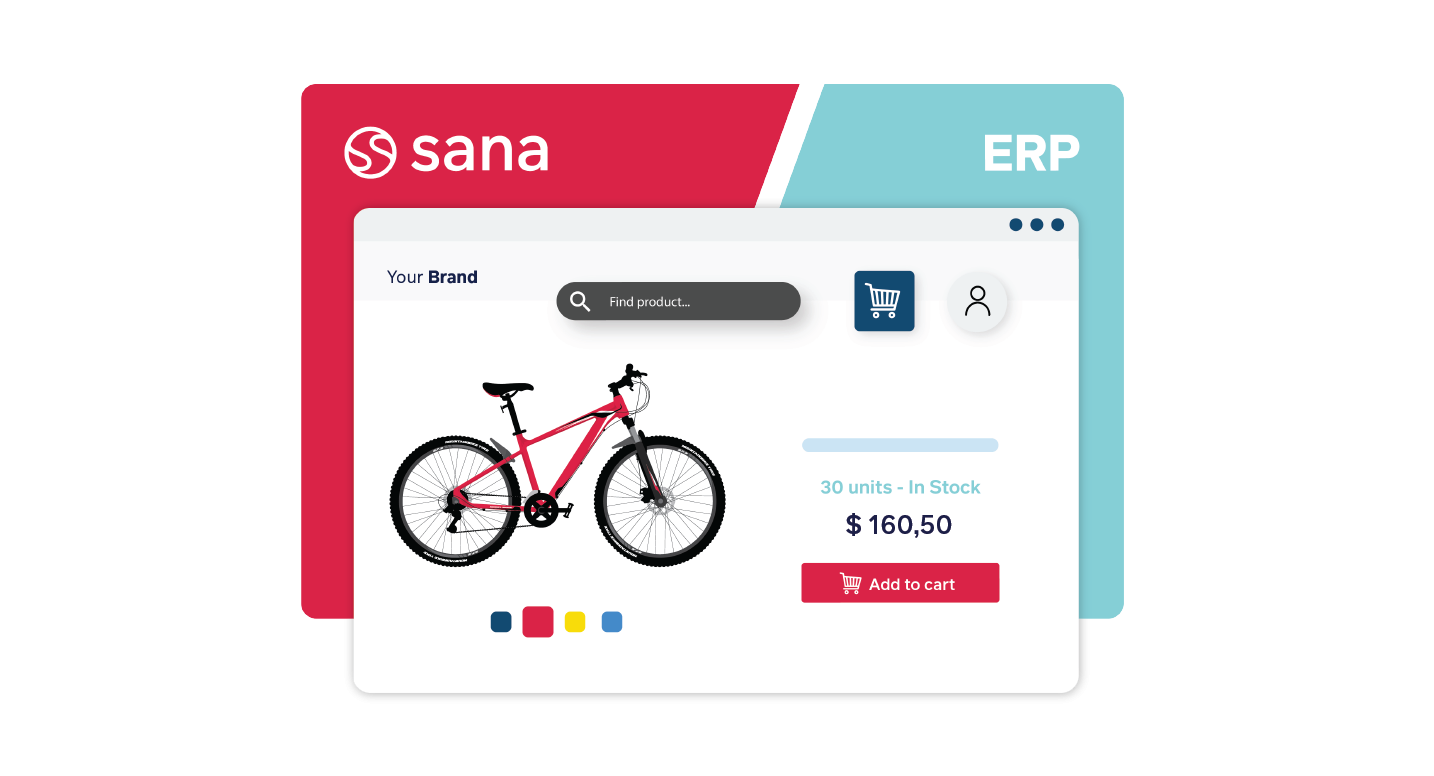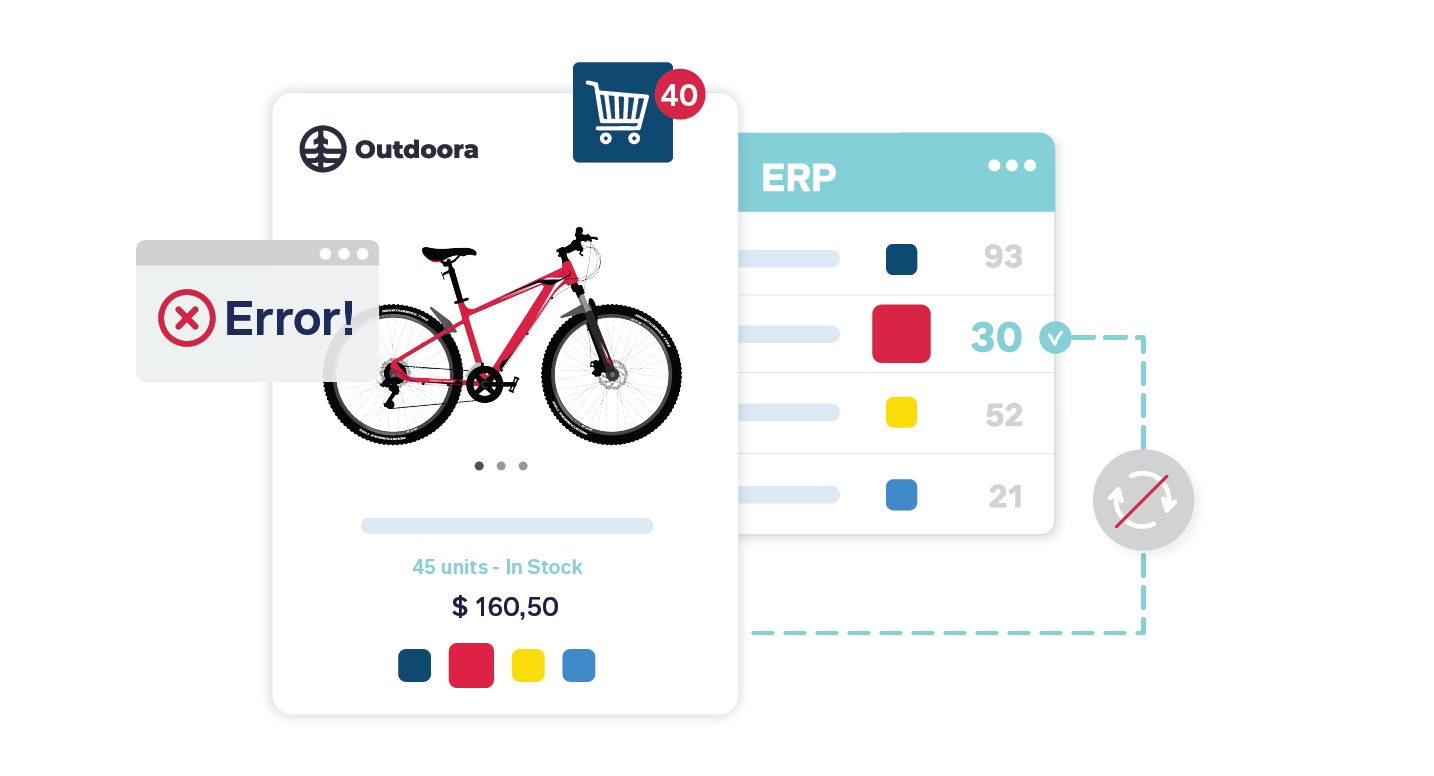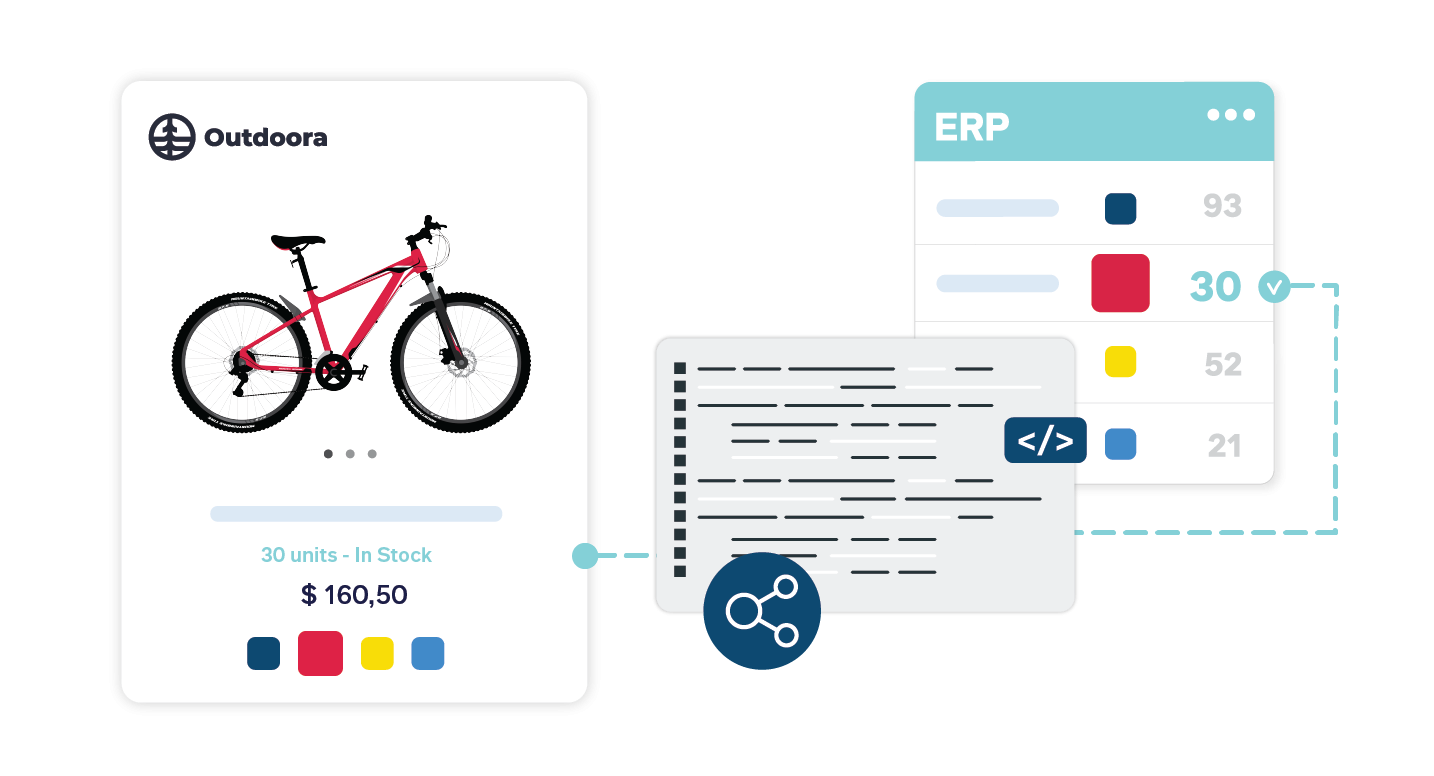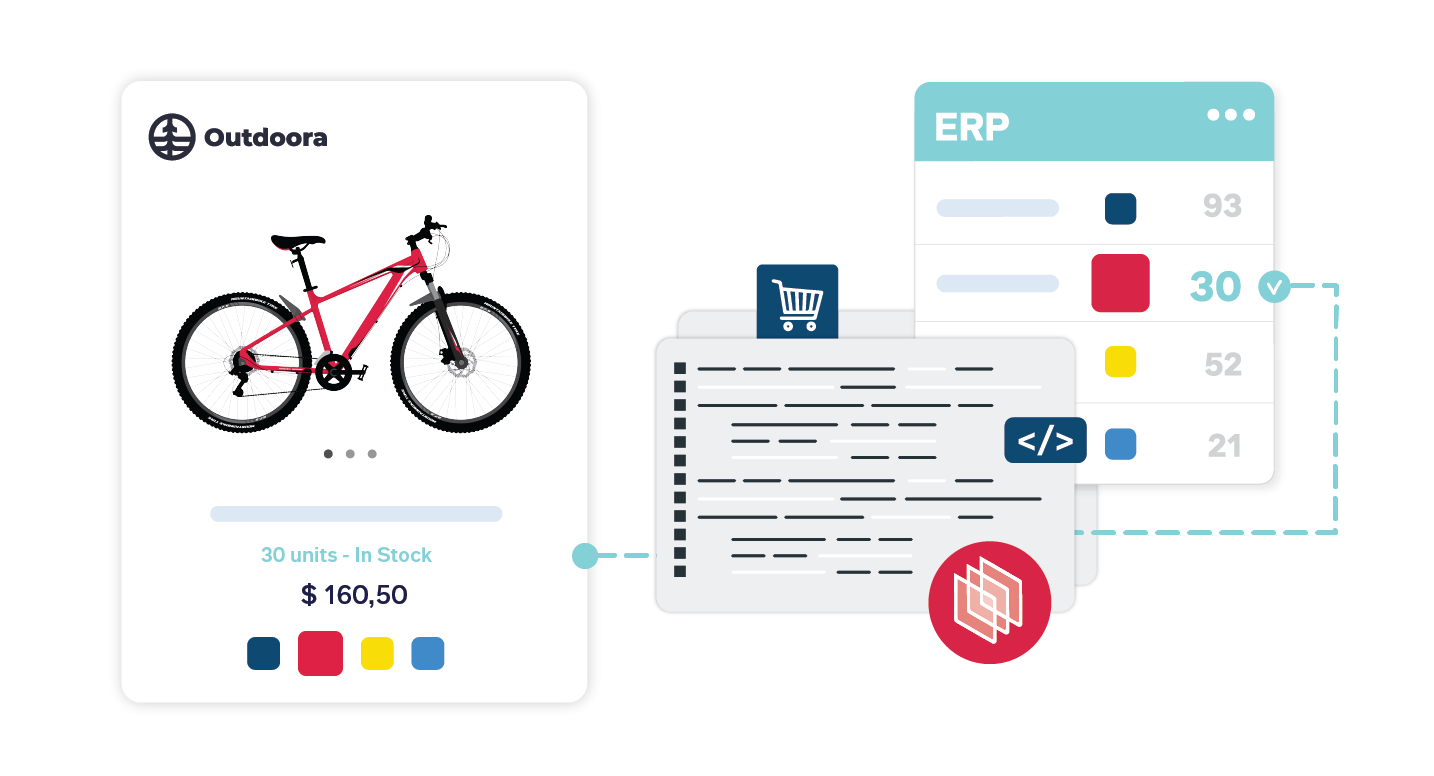ERP integrated
ERP-integrated e-commerce software is built directly in the ERP, transforming the ERP into a single source of truth.

There are a lot of e-commerce software vendors out there, and they all claim to be the best. There’s no doubt that each one is the best for someone. But the real question is: which e-commerce software is the best for you? It all depends on your industry, business size, goals and needs. This e-commerce software comparison template and decision-making chart will help you find the perfect e-commerce solution for your business, even if it’s not ours.
Step 1: Open the e-commerce software comparison template.
Step 2: On the first page, get an overview of the 4 main types of e-commerce software available on the market. You can also find out more about these different types of software below.
Step 3: Use the decision-making flowchart to find out which e-commerce solution is the best fit for your organization.
Step 4: Use the comparison chart to learn more about the differences between e-commerce software, including ERP connectivity and integration, maintenance, customer view, online customer access to documentation, order fulfillment process, web store launch process, design, and add-on possibilities.
ERP-integrated e-commerce software is built directly in the ERP, transforming the ERP into a single source of truth.
Shopping cart software exists independently from the ERP and other back-office systems and has its own table structure.
Connectors refer to a third-party application used to sync a web store with an ERP system.
Interfaced e-commerce options include a CMS and a connector to sync information to and from the ERP system.
ERP-integrated
Example: Sana Commerce
ERP-integrated e-commerce solutions are designed to turn your ERP into the engine that powers your online store. This type of e-commerce software is built directly inside your ERP, transforming the ERP into a single source of truth. Your web store can then leverage your ERP data to create more relevant, engaging and personalized online experiences.
This software integrates front- and back-office systems to provide a unified business environment that is easy to scale, customize and extend, in addition to providing time-saving automation functionality.
This means that you can manage and efficiently fulfill orders from multiple channels and inventory in a single system. It also gives you a single view of a customer across all channels, so even a customer’s order history can be leveraged to provide personalized and relevant offers in your web store.

Shopping cart
Example: Magento, Shopify
Shopping cart software is used to stand up the front-end web store. It has its own table structure. This means that all the information used on the web store has to be created in that system (e.g. product information, product attributes, pricing, inventory etc.). Likewise, orders captured online in the front-end web store write back to the shopping cart platform, which again, is separate from any back-office system.
This type of e-commerce software is heavily focused on B2C, which is less complex compared to B2B. So when it comes to B2B sales, this software often lacks the functionality needed for complex ordering, such as adequate roles, rights, or authorizations for placing orders as a business.

Connectors
Example: eBridge Connections
Connectors are the third-party application used to sync an e-commerce site with an ERP system. While these applications create a bi-directional flow of information between two systems, this typically occurs at a predefined interval, meaning it’s not true real-time. The web store data is also replicated and synchronized rather than available in real-time directly from the ERP.

Interfaced
Example: k-eCommerce
Interfaced e-commerce software includes a tool to manage the customer-facing front-end web store, such as a CMS and other e-commerce functionality like capturing web orders or promotions. They also include a connector, built in-house, to sync information to and from the ERP system.
This type of e-commerce software does not offer true real-time synchronization, and data replication still has to occur. And in some instances, just like with shopping cart applications, certain data that already resides in the ERP, has to be recreated in the application due to the limitations of the connector.

